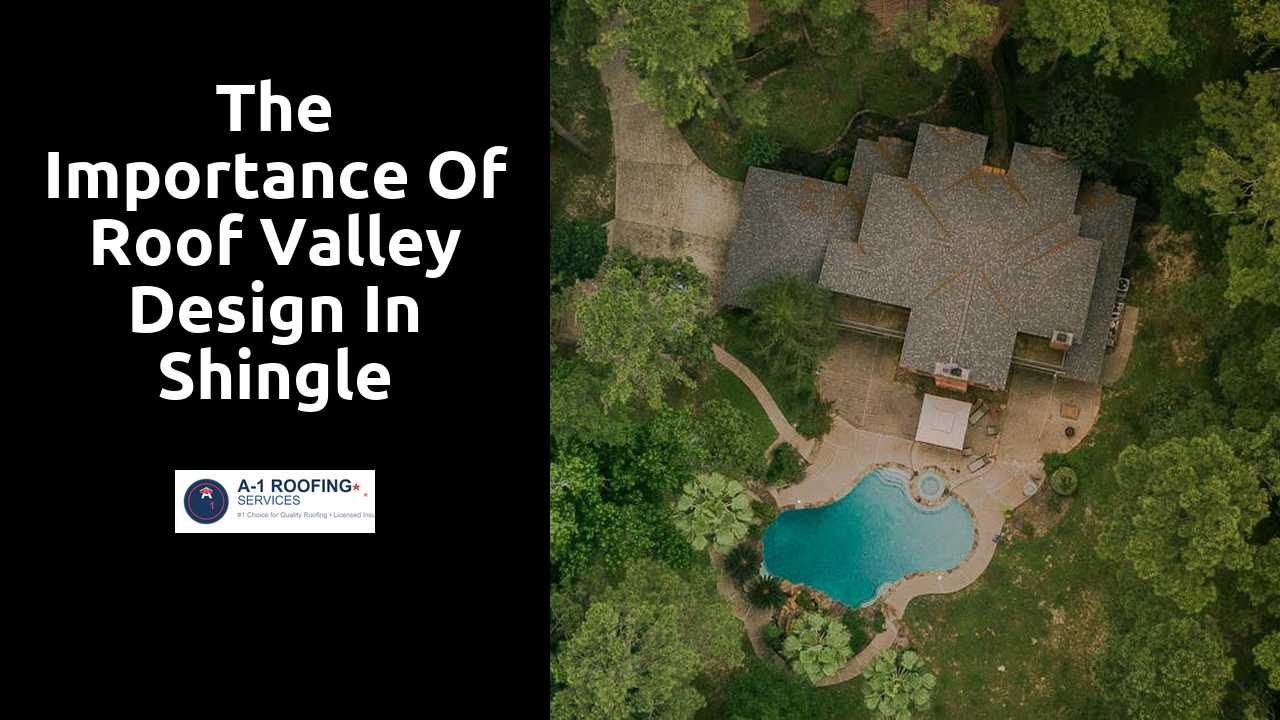
The Importance of Roof Valley Design in Shingle Installation
Table Of Contents
Importance of Professional Installation
The complexity of roof valley design necessitates skilled workmanship. Proper installation ensures effective water drainage and minimizes the risk of leaks. Professionals are trained to address specific challenges presented by different roofing materials and architectural designs. Their expertise helps in choosing the right techniques and materials, which contributes significantly to a roof's overall durability.
Attempting to install roofing valleys without the proper knowledge can lead to a host of problems. Poorly installed valleys can result in improper water flow, leading to pooling and potential structural damage. Homeowners may underestimate the importance of these areas, but a professional touch can make all the difference in achieving a robust and long-lasting roofing system.
More tips and tricks can be found here.
Benefits of Hiring Experts for Roof Valley Design
Selecting professionals for roof valley design can ensure that every aspect of the installation process adheres to industry standards. Experts possess the necessary experience to accurately assess the unique needs of a roof's structure. Their knowledge allows them to make informed choices regarding materials and techniques. This expertise often translates into higher-quality results that can withstand the test of time.
Hiring qualified professionals also brings peace of mind to homeowners. Dedicated contractors typically offer warranties for their work, which adds an extra layer of protection. In addition, these experts stay updated on local building codes and regulations, ensuring compliance throughout the installation process. This attention to detail not only enhances safety but can also improve the overall efficiency of the roof drainage system.
Common Misconceptions About Roof Valleys
Many people believe that roof valleys are simply aesthetic features that add character to a home. This misconception overlooks their critical role in directing water away from the roof and preventing leaks. Properly designed and installed valleys help manage rainwater flow efficiently, mitigating the risk of water pooling and potential damage to the roofing system. Without the right design, homeowners may face costly repairs due to unnecessary wear and tear.
Another common myth revolves around the notion that all roofing materials behave the same way in valleys. In reality, different materials have unique properties affecting their durability and performance in this area. Some may deteriorate faster when exposed to constant moisture or heavy debris runoff. Understanding these differences is crucial for ensuring a roof’s longevity and effectiveness in protecting the home from the elements.
Debunking Myths Surrounding Valley Design
Many homeowners mistakenly believe that valley design is a simple, straightforward aspect of roofing that anyone can manage. This idea often leads people to underestimate the complexity involved in creating effective roof valleys. A poorly designed valley can cause significant issues, including water pooling and premature wear of shingles. Understanding the nuances of drainage, materials, and angles is crucial for a durable roof structure that can withstand harsh weather conditions.
Another common misconception is that a valley requires minimal maintenance once installed. In reality, regular upkeep is vital for ensuring functionality over time. Leaves, debris, and other organic materials can build up in valleys, leading to blockages that trap water and ultimately lead to leaks. By acknowledging the importance of ongoing inspection and care, homeowners can prevent costly repairs and extend the life of their roofing system.
Maintenance Tips for Roof Valleys
Regular inspections of roof valleys are essential for maintaining their functionality and preventing costly repairs. Homeowners should schedule an inspection at least twice a year, ideally in spring and fall. During these assessments, look for debris accumulation, signs of wear, or any damage to shingles. Keeping valleys free from leaves, twigs, and other debris promotes adequate water flow and reduces the risk of blockages that might lead to leaks.
Proper drainage is crucial for roof valleys to perform effectively. Ensure that gutters and downspouts are clean and adequately routed to prevent overflow. In addition, consider applying a sealant periodically to strengthen the junctions between shingles and the valley flashing. This simple step can significantly enhance water resistance and prolong the lifespan of the roofing system.
Best Practices to Ensure Longevity
Regular inspections are crucial for maintaining the longevity of roof valleys. Homeowners should check for signs of wear, such as loose shingles or debris buildup, which can obstruct water flow and lead to leaks. A clean valley allows rainwater to flow freely, reducing the risk of water pooling and subsequent damage. Any issues should be addressed promptly by professionals to minimize potential structural problems.
Additionally, ensuring proper alignment and secure fastening during installation can enhance the durability of the roof valley. Using high-quality materials specifically designed for valley construction will also contribute to its long-term performance. Sealing the edges with premium sealants can prevent water infiltration. Following these best practices will significantly extend the life of the roof valley and preserve the overall integrity of the roof system.
Related Links
Techniques for Properly Aligning ShinglesChoosing the Right Underlayment for Shingle Roofing